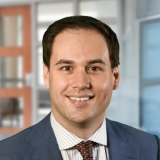The 4% rule is nearly universal in the personal finance space. But does it hold up for doctors?
Let me back up. First, what even is the 4% rule? Essentially, it says that if you draw down 4% of your retirement savings each year during retirement, your nest egg will have the best chance of living as long as you do. This means you will not run out of money before you die. (Here’s a screenshot to illustrate the rate of withdrawal versus probability of it lasting your lifetime.)
If you follow the 4% rule and withdraw 4% per year and let the rest of your money work for you in investments, you can keep replenishing so that you have enough for the golden years.
People are usually surprised at this concept as they imagined that they would be able to withdraw a higher amount per year — I know I was!
Why You Should Care About the 4% Rule Even if You’re Not Retired
Notably, the 4% rule is important not just in retirement but before retirement. That’s because it provides a guide to estimating how much of a nest egg you need to retire. It allows you to create your FIRE goal number.
Once you have your goal yearly expenses for retirement ($X) and a safe withdrawal rate (4%), the following simple equation will then allow you to compute how much of a nest egg you need: 4% = $X/nest egg.
So, say you predict your monthly expenses to be $10,000. Your desired yearly withdrawal amount is then $120,000 ($10,000 x 12). Some back of the envelope math will show you that you then would need a nest egg of $3 million ($120,000/4%).
Again, that number can be shocking to most as they didn’t predict it would be that high. The good news, however, is that as physicians, our income is definitely high enough that we can create a savings rate that will certainly get us to our goals through wise investing in broadly diversified, low cost index funds.
The 4% Rule Origin Story
The creator of the 4% rule is a guy named Bill Bengen. He was a soft drink executive who, after retirement, got a Master’s degree in finance and started a financial planning firm. At the time, the prevailing logic was that if the market return from the overall stock market was around 7%, then that was how much retirees could withdraw from their nest egg each year.
This math didn’t math for Bill. So, as discussed in a recent podcast interview, he studied every possible 30-year retirement window in American markets, kicking off in 1926. Window one: 1926-1955. Window two: 1927-1956. And on and on. For each window, he used a simple model portfolio asset allocation of 50% S&P 500 and 50% medium-term government bonds.
He then asked: In the worst possible market conditions in history — the real worst case scenario — what could a retiree safely take from their nest egg? His calculations revealed a magic number: 4.15%.
The 4% rule holds, then, that a retiree could withdraw 4.15% in the first year of their retirement … then withdraw that same amount each year after, bumped up for inflation. And, based on Bill’s study, even in the worst markets, the money would last.
Does the 4% Rule Hold Up?
The 4% rule has its fair share of critics — mainly because it seems too conservative.
But the strictness is by design. Because it assumes three things: that you will live a very, very long time; that you will retire in the worst market conditions possible; and that your expenses are completely fixed.
The probability of all things happening is low. Most people will not retire in the Great Depression and live to be 115. And expenses are never quite fixed.
But, if that did happen to you, the 4% rule would keep you financially safe. And that is a reassuring thing.
That is how the 4% rule works in a vacuum. But how does it work in real life?
The reason that most critics rail against the 4% rule is sequence of returns. This refers to the individual yearly returns of the stock market rather than its overall average. For example, average yearly returns for three sample years could be 5.33%. But the sequence of returns could be 1%, 10%, and 5%. Or it could be 10%, 5%, 1%. Two different sequences of returns, same average.
The issue becomes that some sequences of returns are better than others. In the simplest terms, the higher the returns early in your retirement, the better. The lower the returns early on, the worse. That’s because you would be forced to sell stocks (to cover your retirement living expenses) while stocks were at a low.
The 4% rule assumes the worst. But that is usually not the case.
Taking it from Bill Bengen himself, a better rule may be the 5% withdrawal rule!
Should Doctors Follow the 4% Rule?
For doctors, the 5% rule probably makes even more sense. Why? We maintain very high and flexible earning potential.
So, let’s say that, as a doctor, I retire and follow the 5% rule. But then, of course, the worst case scenario happens! Markets crash, skies are falling. And I realize that I will actually be a little short on retirement funds if I live a very, very long time.
Well, thankfully I am a doctor. I could always go back to clinical medicine in some capacity and make a bunch more money. Or I could pursue any alternative medical career or side gig and be well-compensated. We are lucky to have a nice parachute!
Will I Be Following the 4% Rule?
What am I, a personal finance expert and well-paid plastic surgeon, going to do with this information?
I’ll tell you exactly what I’m going to do … I’m going to keep using the 4% rule!
Why? Well, I am on the more conservative side. To put things in a different perspective, I was always the type of person who believed if I was 15 minutes ahead of time, I was on time. And if I was on time, I was late. That way, I was never actually late. Worst case scenario, I was on time.
The 4% rule is the same thing for money. By following it, in the worst case scenario, I have a lot more money to spend than I anticipated. And worst case scenario, we are A-OK.
That’s why, in my written personal financial plan, my wife and I still use the 4% rule to estimate our goal nest egg. I think most doctors, as high income earners, have the luxury to do the same thing!
Do you follow the 4% rule? Why or why not? Share your reasoning in the comments!
Jordan Frey, MD is a plastic surgeon in Buffalo, NY at Erie County Medical Center and the University of Buffalo. His clinical focus is on breast reconstruction and complex microsurgery. He is also the founder of The Prudent Plastic Surgeon, one of the fastest growing finance blogs. There, he shares his journey to financial well-being with a goal of helping all physicians reach financial freedom, practicing on their own terms.
Image by Shutterstock







